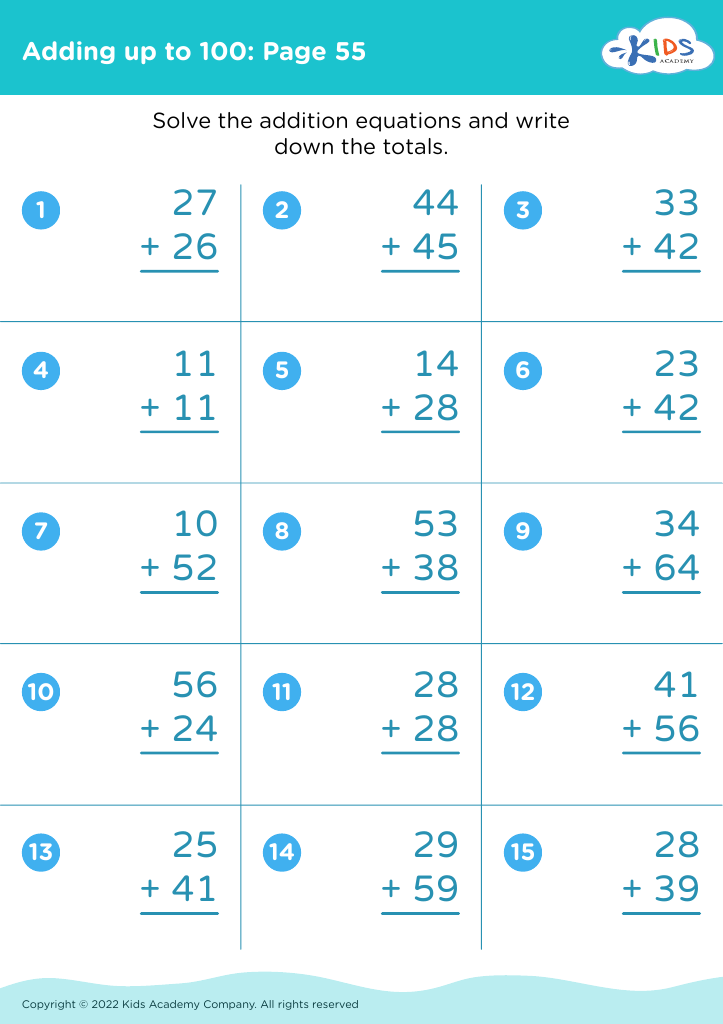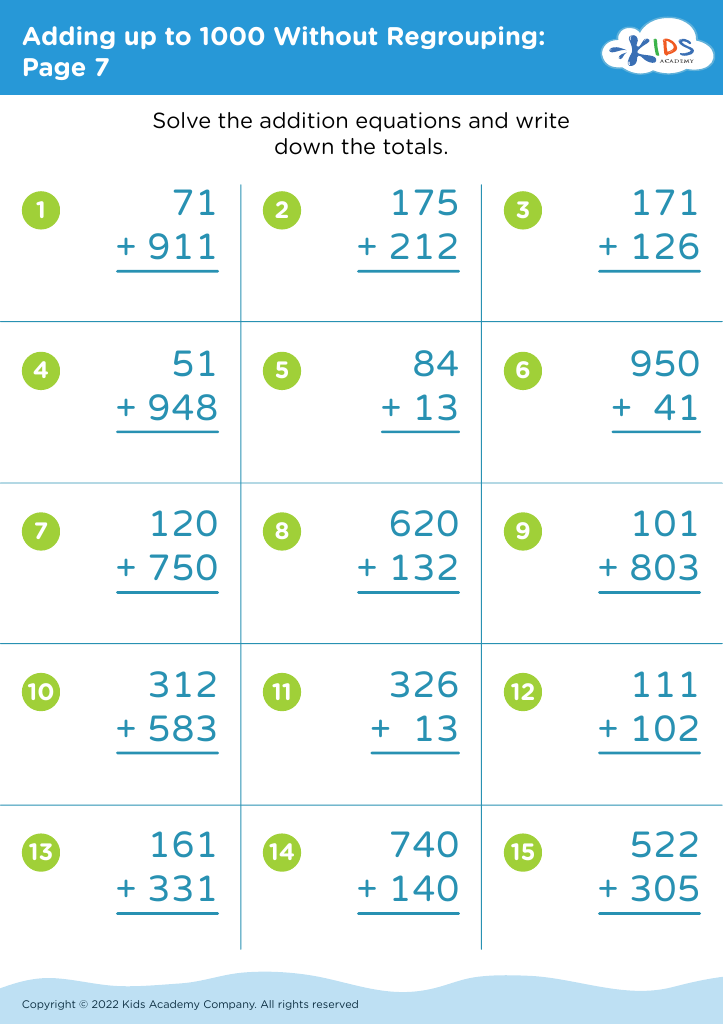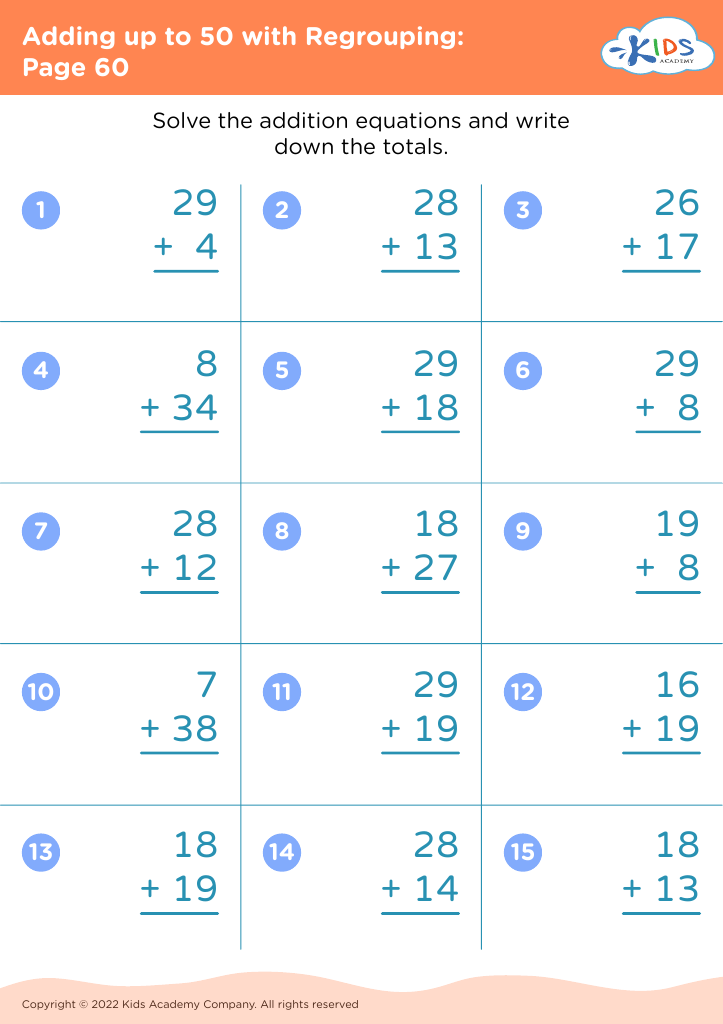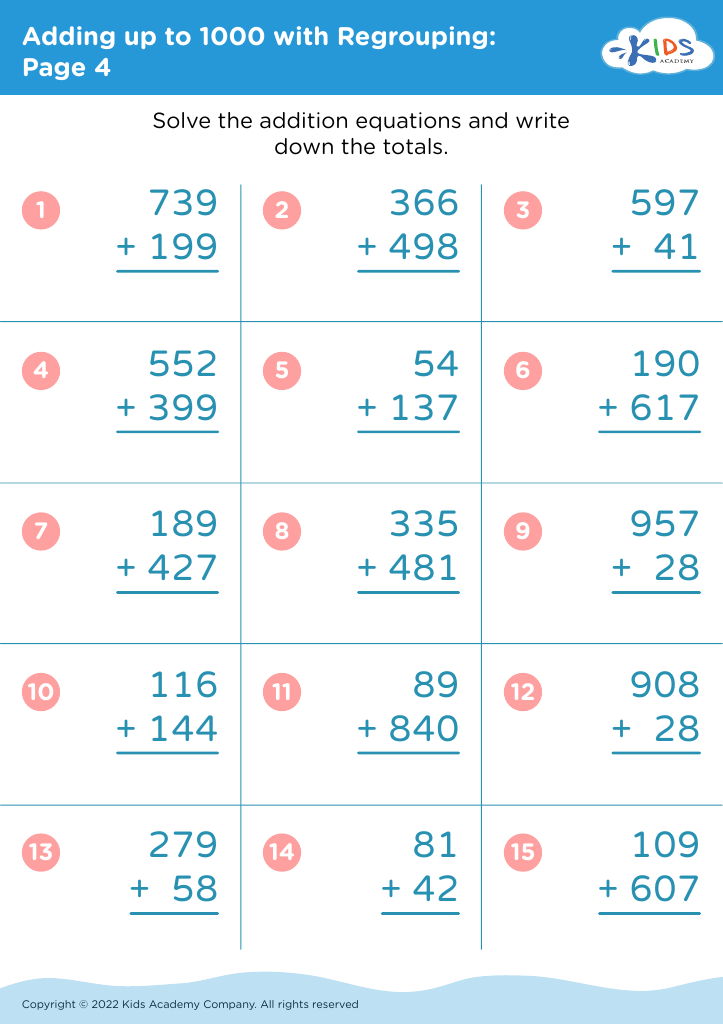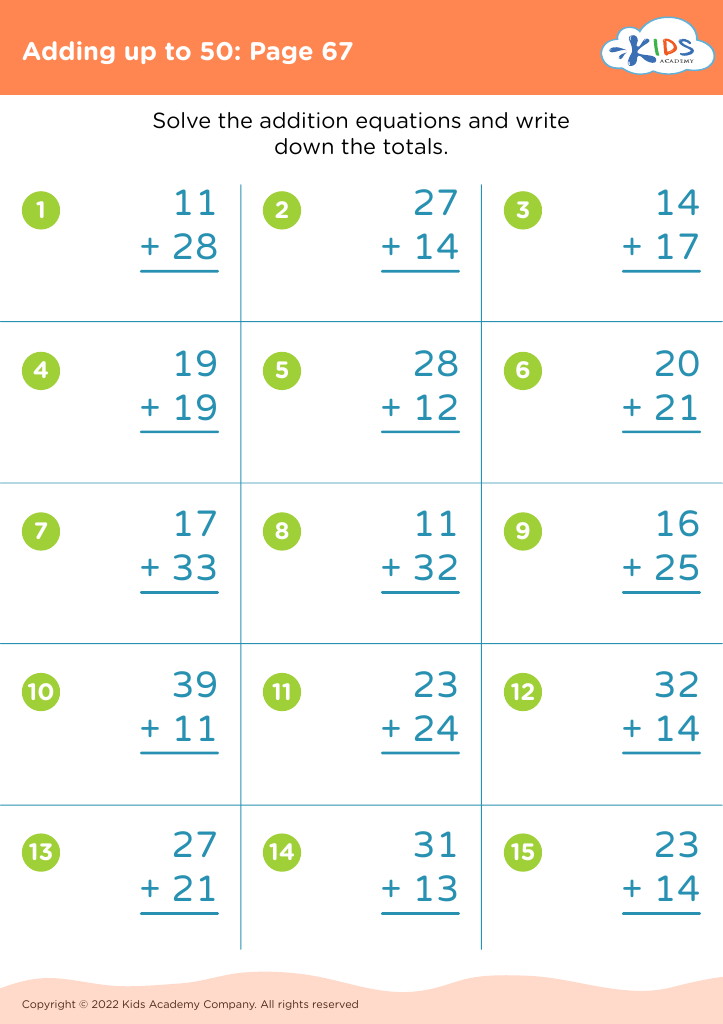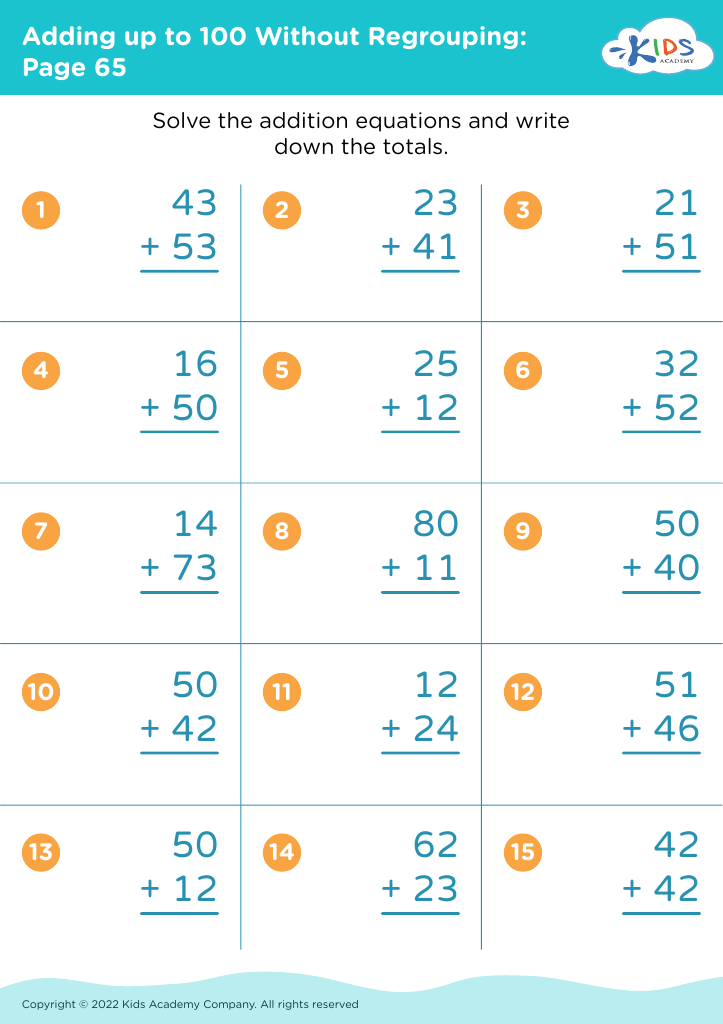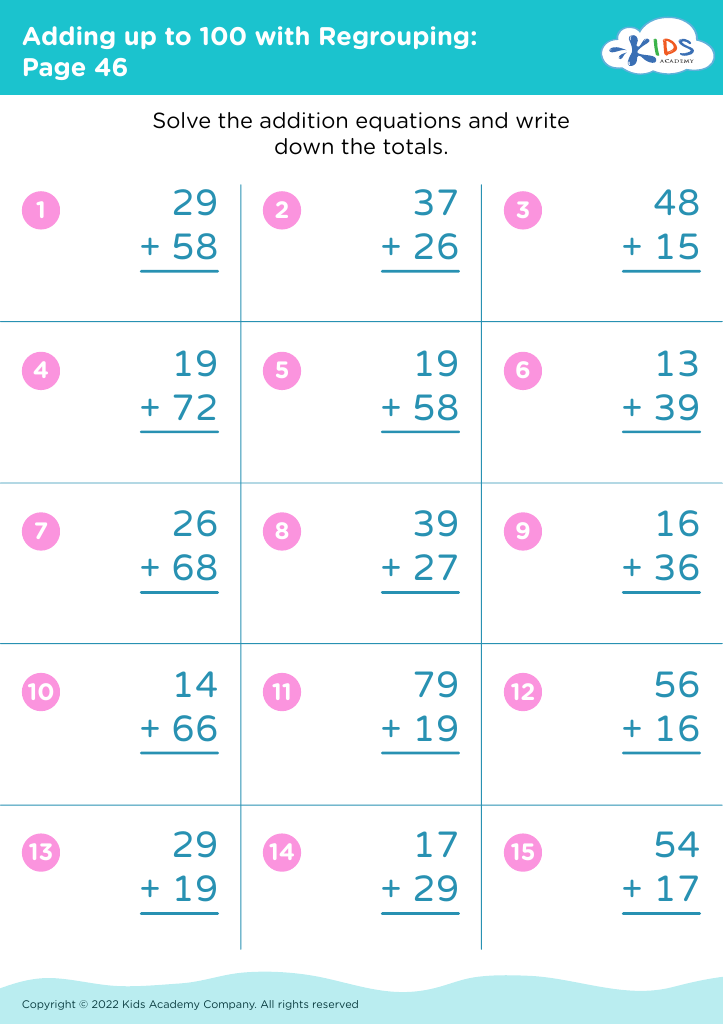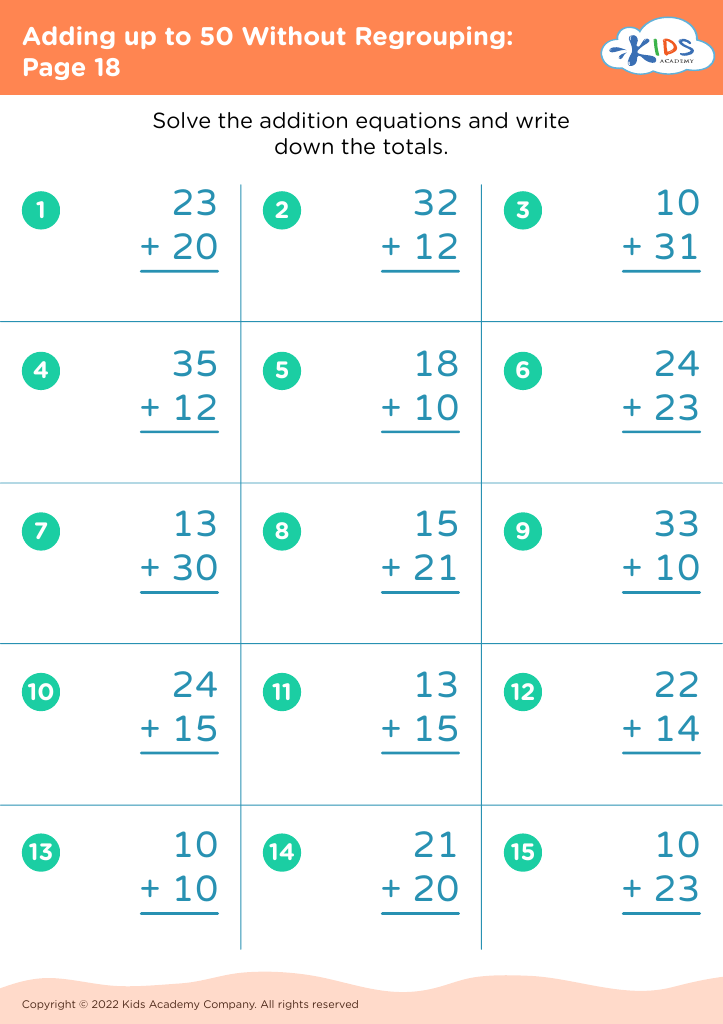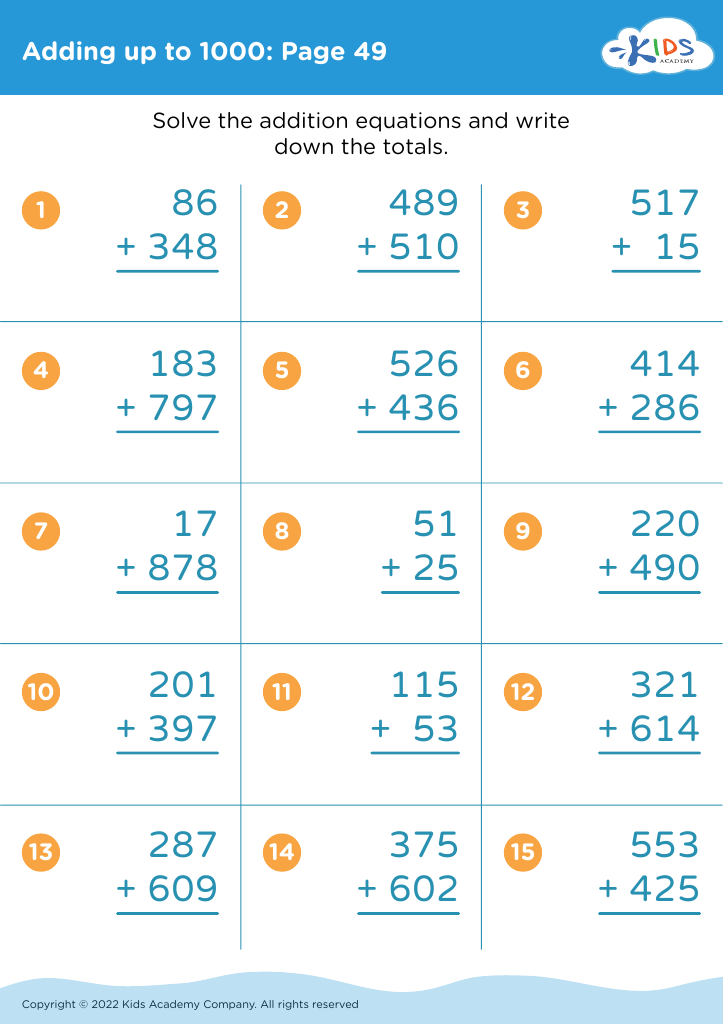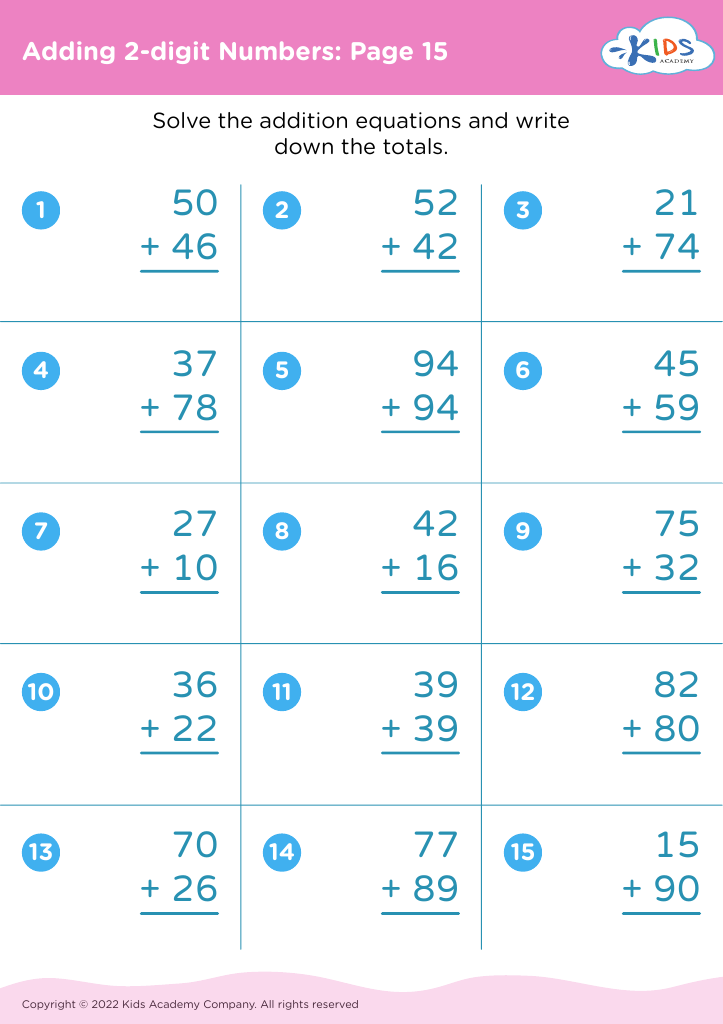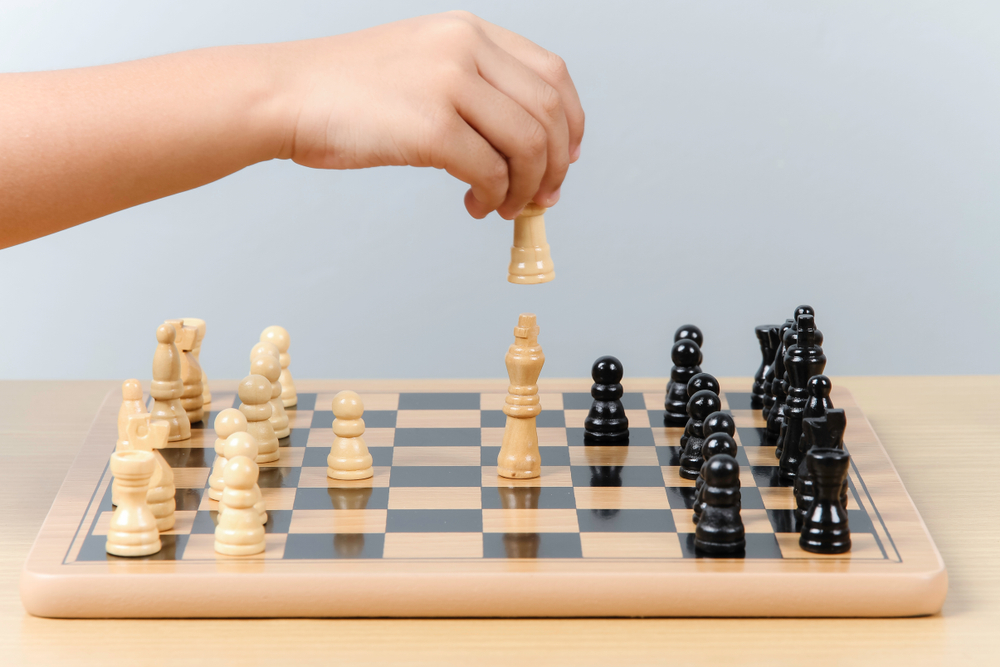Understanding fractions Math Worksheets for Ages 5-8 - Page 3
215 filtered results
-
From - To
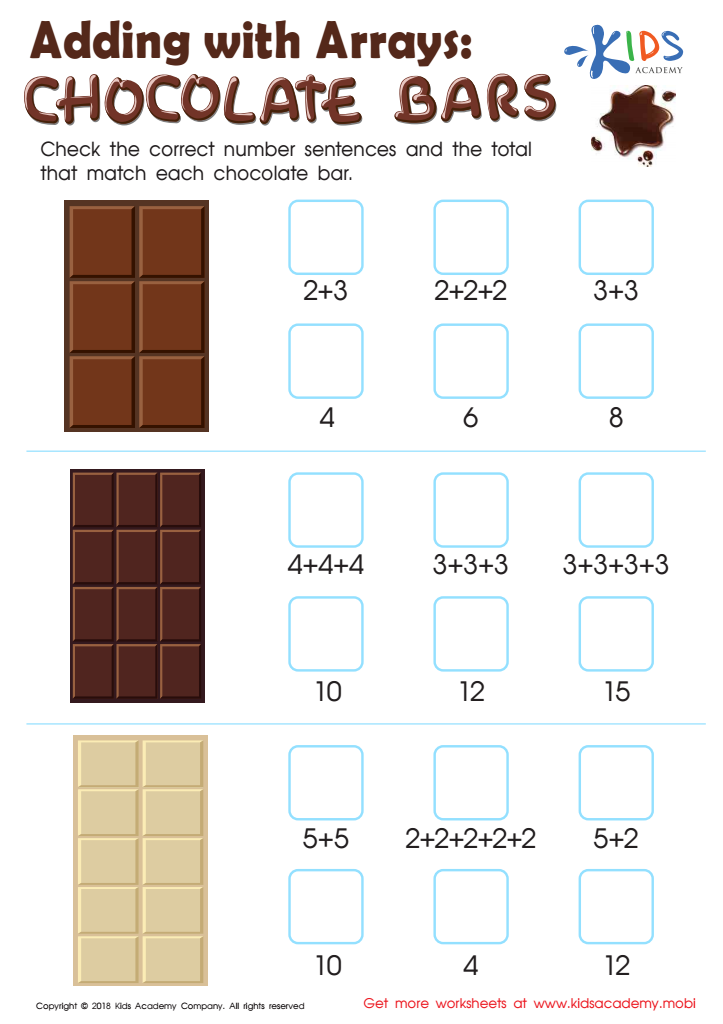

Adding with Arrays: Chocolate Bars Worksheet


Match Fractions Worksheet


Fruity Problem Solving Worksheet
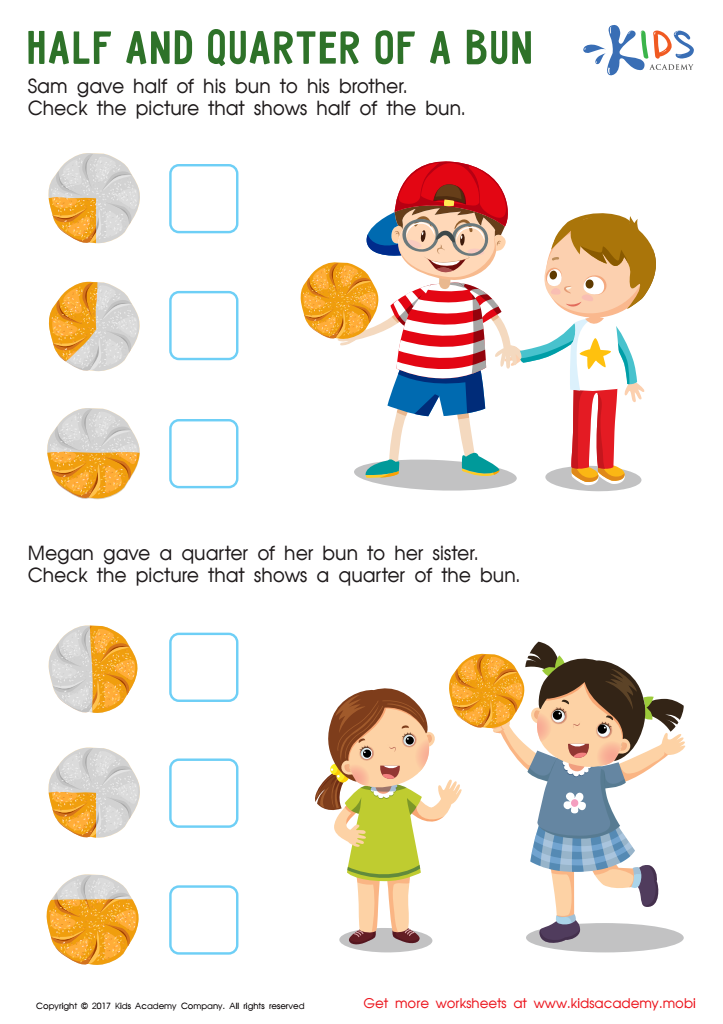

Half and Quarter of a Bun Worksheet
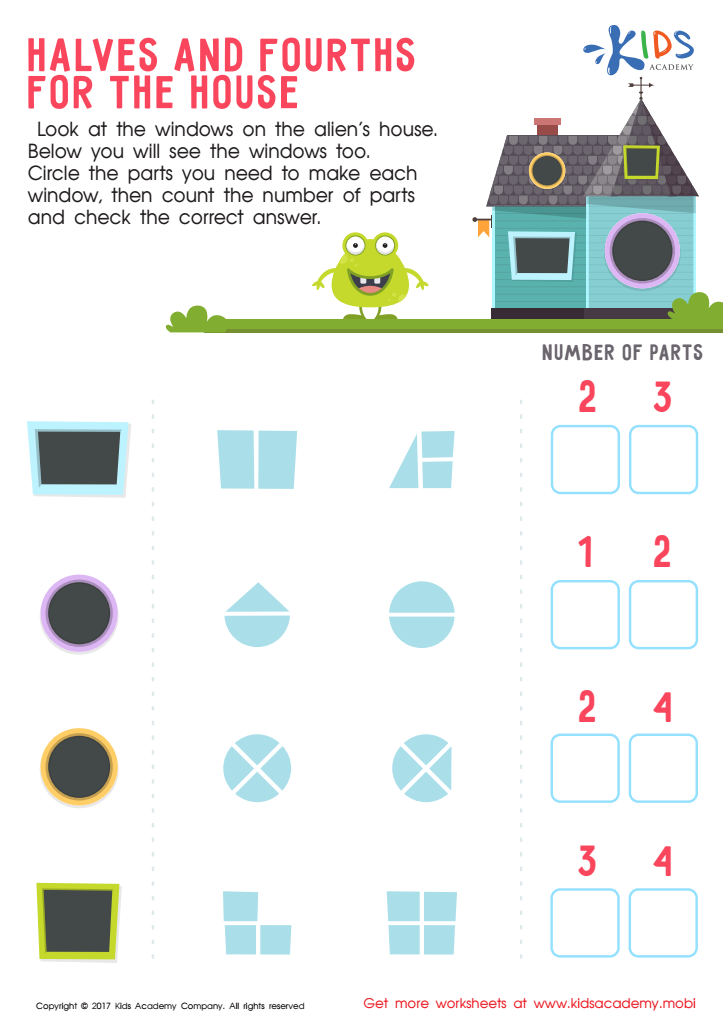

Halves and Fourths for the House Worksheet
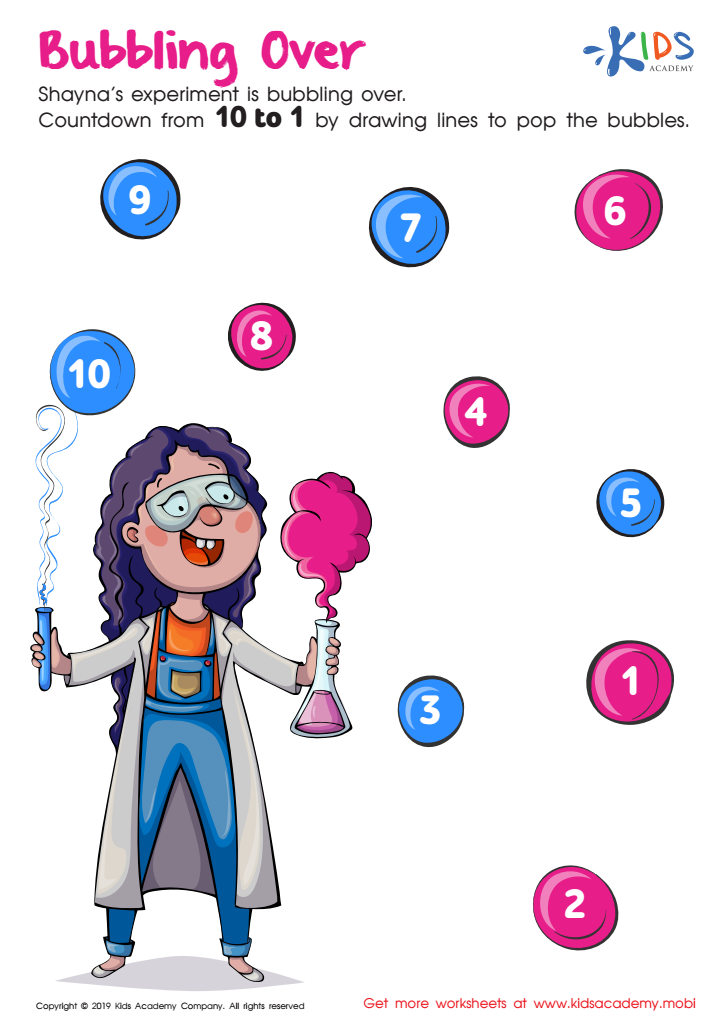

Bubbling Over Worksheet
Understanding fractions is an essential milestone for children aged 5-8, making it vital for parents and teachers to engage with this concept early on. At this age, children begin to develop numeracy skills, and introducing fractions helps them understand the idea of parts and wholes, promoting deep mathematical thinking.
Fractions are everywhere in everyday life—from dividing a pizza to measuring ingredients for recipes. By learning fractions, children gain practical skills that contribute to their overall mathematical literacy. Moreover, strong foundational knowledge in fractions helps scaffold later concepts in math, including ratios, percentages, and algebra.
Furthermore, mastery of fractions supports critical thinking and problem-solving abilities. When children manipulate fractions, they learn to analyze and compare, fostering skills that are applicable beyond math, such as in science and finance.
As parents and teachers guide children through this learning phase, they create engaging and immersive activities—like cooking or crafting—that enhance understanding. This nurturing approach not only solidifies knowledge but also cultivates a positive attitude towards math. In essence, investing time in teaching fractions equips children with the tools they need for academic success and real-world problem-solving.


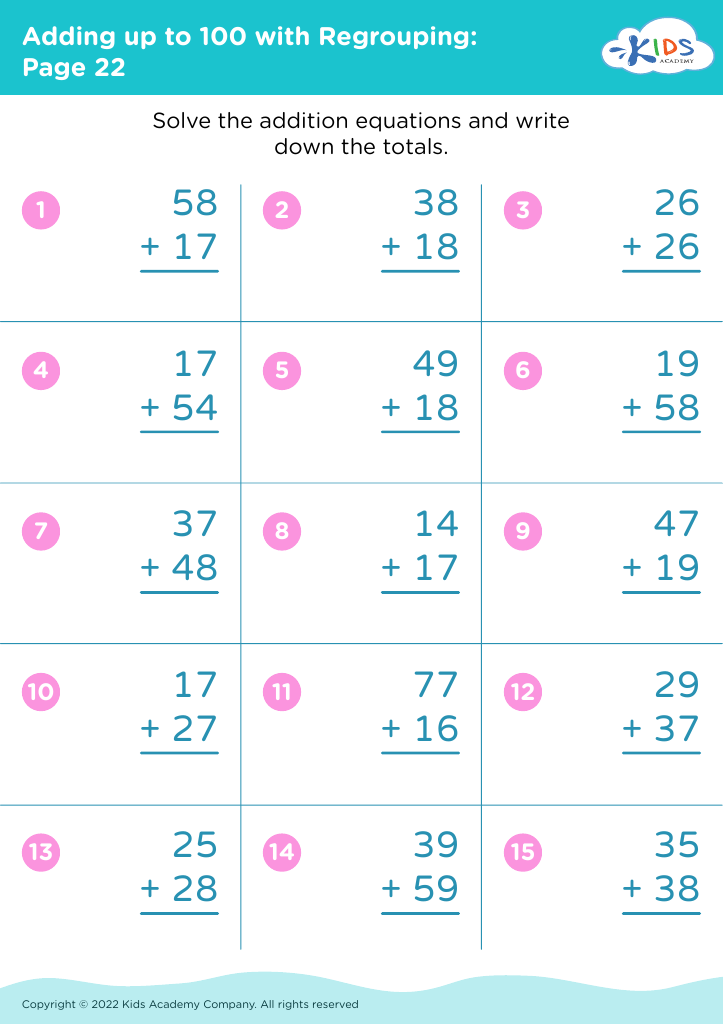
 Assign to My Students
Assign to My Students
